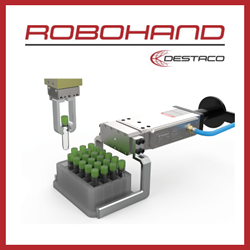Distributed Agile Submarine Hunting (DASH) Program Completes Milestones
DARPA successfully tests two sub-hunter prototypes on the deep ocean seafloor
DARPA's Distributed Agile Submarine Hunting (DASH) Program has tested two complementary prototype systems as part of its Phase 2 development effort. The prototypes demonstrated functional sonar, communications and mobility at deep depths. The successful tests furthered DASH's goals to apply advances in deep-ocean distributed sonar to help find and track quiet submarines.
The first prototype is the Transformational Reliable Acoustic Path System (TRAPS), developed by a team led by Science Applications International Corporation (SAIC). TRAPS is a fixed passive sonar node designed to achieve large-area coverage by exploiting advantages of operating from the deep seafloor. This expendable, low-size, weight and power (SWaP) node communicated to a stationary surface node via wireless acoustic modems, with further secure RF reach back to the performer's facilities via satellite.
"The goal is not only to show we can address the most challenging problem in ASW [anti-submarine warfare], but that we can do so with systems that are scalable and affordable," said Andy Coon, DARPA program manager. "A single deep sea node provides a field of view with significant coverage allowing for a limited number of nodes to scale to large areas. Within the trade space of deep ocean sonar, we need to get creative to achieve affordable hardware and operations. We purposely have avoided increasing the size and complexity of arrays to achieve our aims. This is a gamble, but we believe the potential payoff will be high."
The second prototype is the Submarine Hold at RisK (SHARK), an unmanned underwater vehicle (UUV) developed by a team led by Applied Physical Systems (APS). SHARK intends to provide a mobile active sonar platform to track submarines after initial detections are made. APS team member Bluefin Robotics recently deployed the prototype to depth in February 2013.
"Sending the prototype deep for the first time was like going to another planet and took nerve," Coon said. "I am very pleased with the team and the vehicle's performance at sea. We knew the design requirements of the system were challenging for industry to meet, especially when constrained to a price point that required designers to incorporate Commercial Off-the-Shelf (COTS) components not normally used at these depths."
A third DASH team member, the Woods Hole Oceanographic Institution, supported the physical network layers that both teams used.
TRAPS and SHARK are scheduled to demonstrate their core sonar functionality together. Subsequent efforts may follow to realize multiple sonar nodes as well as the integration of the SHARK UUV with its sonar.
Featured Product

DESTACO - Revolutionizing Industrial Automation
Looking for a reliable solution to enhance your automation process? Look no further than the DESTACO Robohand Grippers. These grippers are designed for the modern world of robotics, offering unparalleled performance and precision. Whether you need to grip fragile items, irregularly shaped objects, or heavy-duty components, the DESTACO Robohand Grippers have got you covered. Their modular design allows for quick and easy customization, ensuring a perfect fit for your application.
